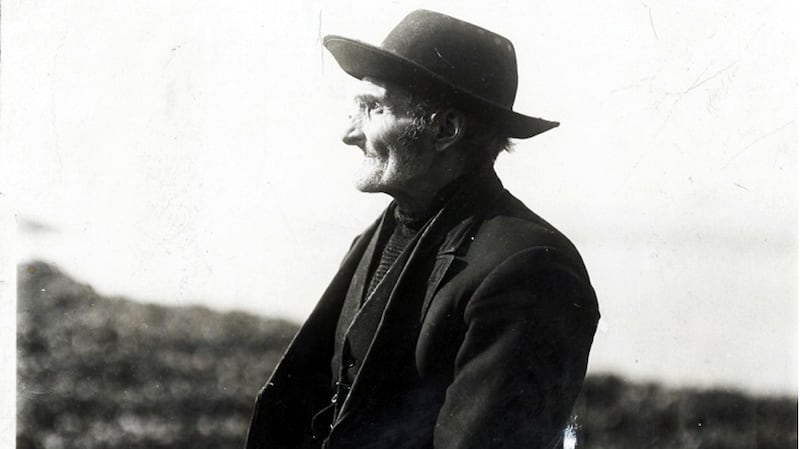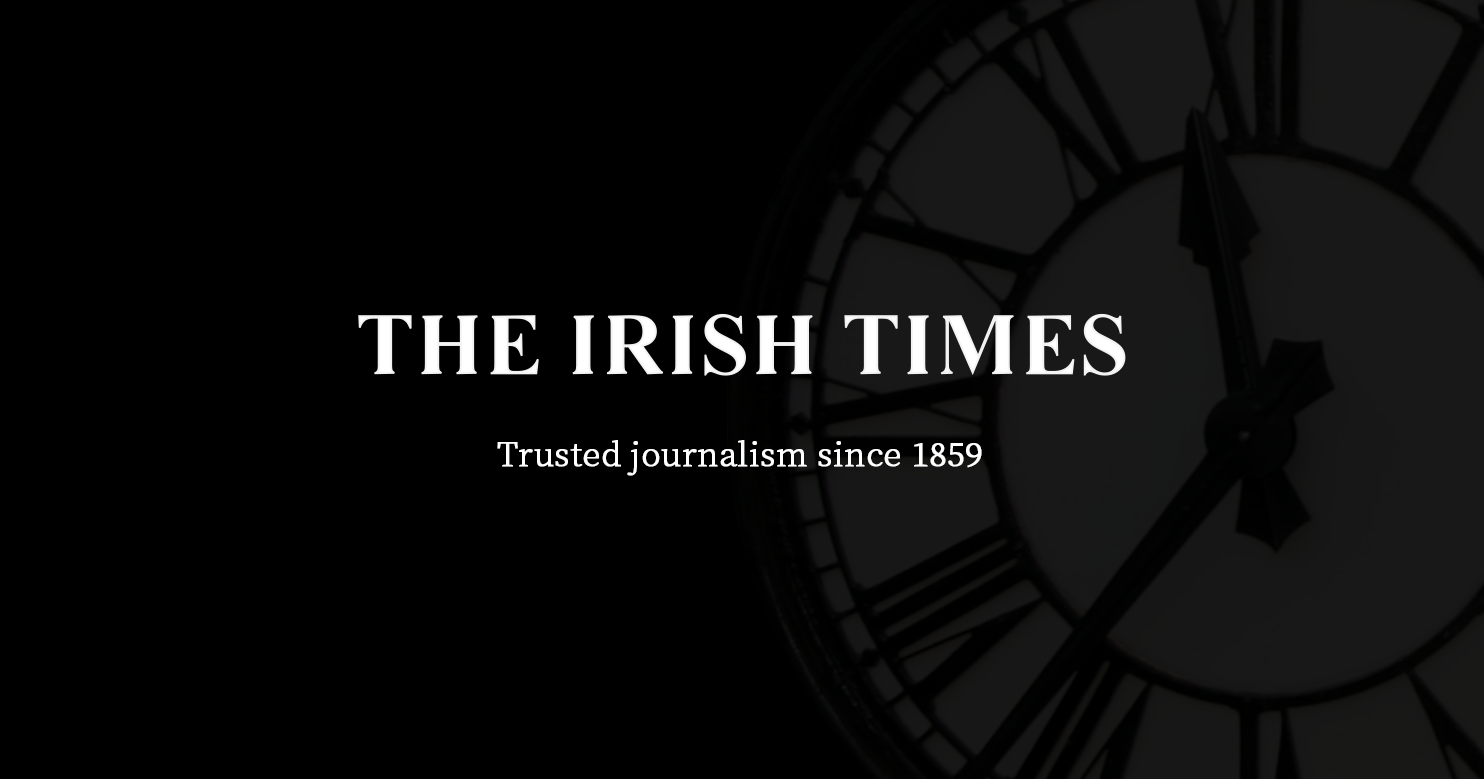I first went to sea in 2009 aboard the the RRS James Cook, a UK research vessel. It was a six-week survey of the Atlantic and we often passed above the edge of the Irish continental shelf, a few hundred kilometres west of Kerry. In between work shifts, with little else to do, I took to standing on deck. That far out at sea, all you have to stare at is the boat, the seagulls, the waves.
Then one afternoon, the waves changed.
At first I thought the sea had turned grey, the change came over such a large area. Then I realised it was not the waves at all, it was dolphins. Hundreds, maybe a thousand dolphins were bow-riding the ship. It was a superpod.
Everywhere smooth grey backs curved above the surface. Occasionally one of the dolphins leapt from the water and I saw a distinctive yellow hourglass shape along its side, the mark of the common dolphin. Groups of dolphins took turns to ride at the front, just ahead of the bow. After a few minutes, one group would move away and another would take its place. Further out, white patches of disturbed water were new pods coming to join the fun.
READ MORE
I was transfixed; around the vessel the sea was more dolphin than water. It was the kind of abundance I had heard of only in tales, a luxury of dolphins, as though we had steamed out of the present into an ocean of the past.
I watched the dolphins alone and, as we had long been without signal, my mobile was stashed in the cabin. I have no pictures of the superpod and it went unrecorded. All I have is the story.
The common dolphin is one of at least 26 cetacean species (whales, dolphins and porpoises) found in Irish waters, an area also home to deep water corals, seagrass meadows and the largest type of skate in the world. At 488,762 square kilometres, Ireland’s marine area is almost six times the size of the island itself. Ireland is not the Emerald Isle, it’s sapphire.
Over the past 20 years I have watched our seas change. I’ve studied graphs of population size, species richness, habitat extent – markers that tell us about the sea’s health. Many of these are going down, fast.

Legislation to protect Ireland’s marine life was due last year but the Marine Protected Areas Bill failed to pass before the general election. With less than 10 per cent of Ireland’s seas currently protected it’s hard to see how the Government will meet the international target of at least 30 per cent by 2030. It’s even harder to imagine how Ireland’s seas will fare if they don’t.
The trend is clear. Sixty-five per cent of Ireland’s marine and coastal habitats are in poor condition and only 17 per cent of commercially fished stocks are in a healthy state. Since the 1970s Atlantic salmon populations have declined by 90 per cent, European eels by 92 per cent.
The statistics of decline are hard to take in. I’m a marine biologist. Since I was young I’ve been obsessed with the sea, but even I struggle to connect with these numbers, shocking as they are.
It might be an eco-anxiety response but these days when I see a plummeting graph I find myself drawn not to the end of the line – the perilous state of our present – but to the start, the top of the line when things were, if not brilliant (humans have been altering the marine environment for almost as long as we’ve been around), at least better. What were our seas like in the past? How can we gain a sense of the life that once darted, breached and swam behind that part of the graph line? What did it look like to stand beside that sea?
John Ruskin, the writer and art critic, said that painting an ocean “is like trying to paint a soul”. To visualise the ocean biodiversity crisis you only need to draw a line graph, with the line going down. It is an important message but it makes for a boring image. Where is, to use Ruskin again because he seemed to get it, the “wild, various, fantastic, tameless unity of the sea”? Perhaps that is not the job of graphs and statistics. And while I don’t want to let scientists off the hook (Why is it not their job? How might it be?), I think we need first to answer a more obvious question. In the push to protect Ireland’s seas, where on earth or ocean are the arts? In the land of the poets and the seanchaí, where are the storytellers of the sea?
For me, the answer lies in literature.
“The big boats were bringing home quantities of fish. The three of them were full to the brim every day … My father said that I carried more than a thousand home.”
When I read these books I am not looking for perfect accuracy; that duty still resides with the scientist. Instead I seek immersion in another time, to see and smell and be squawked at, to have extinct fish break the surface of the ocean. I want to feel what it was like, what has changed, how much we have lost
That’s Tomás Ó Criomhthain in The Islandman coming home from a day’s fishing by the Blasket Islands in the early 1870s. He’s about 14 years old. Later, he will grapple with whales and basking sharks and fill his net with May mackerel “each one as long as your arm”. By my count, he lists more than 20 marine species in the book. He knows their seasons and behaviours, their likes and dislikes. Ó Criomhthain says: “The lobster likes to have the sea calm and quiet when he peers about him.”
Two generations after Ó Criomhthain, but in a book published only four years after The Islandman, Muiris Ó Súilleabháin’s Twenty Years A-Growing has 35 coastal and marine species. His story includes 17 different sea birds, 13 of which are now on the Red and Amber Lists of Conservation Concern. Yet when I open the book, I can still see an Ireland where “the sea was black with birds”.
[ The lakes on our island are treasures in urgent need of protectionOpens in new window ]
At that point Ó Súilleabháin is 10 years old and he can already identify the seabirds by their call alone. These oceans of the past are also tales of a past way of living with the sea. How many 10-year-olds today would know a petrel as “the sweetest song ever heard” or a black-backed gull from its “cóch-cóch-cóch”?
Afloat in the curragh the young Ó Súilleabháin sees “some animal giving a tailor’s leap out of the water into the sky”. His father names the fish, “Did you ever hear tell of the sturgeon? … Well, there it is for you now, and the place where it leaps like that there do be many more below.” Today sturgeon are considered extinct in Irish waters.
Of course, some of the islanders’ knowledge comes from their need to eat these animals. But when you note every species name, every moment where emotion, interest or awe is displayed, hunger is the lesser part of their intimacy with nature.

The Blasket autobiographies are one example and in the search for Ireland’s old seas it pays to throw the net wide, even to fiction. Garrett Carr’s upcoming debut novel, The Boy from the Sea, gives us the Atlantic of the 1970s before the full impact of supertrawlers was felt. His characters go further offshore, finding argentines and scabbards, those “peculiar and unfamiliar creatures” from the valleys of the deep sea.
In the book, Declan, a young fisher, sees an orange roughy for the first time, a few decades before subsidised fisheries will collapse the population. Declan likes to hear the dead fish smack as it hits the processing chute. The orange roughy is now an internationally protected species; their slow growth and long lifespan (like many deep sea fish) means recovery will take time. (I am a PhD student of Carr’s.)
None of these books holds a romantic view of nature; none of them gives us a pristine ocean. Some of the scenes, as with any good fishing tale, are a tad overblown (Ó Criomhthain kills a seal with his bare hands, if you’ll believe him).
But that’s not the point. When I read these books I am not looking for perfect accuracy; that duty still resides with the scientist. Instead I seek immersion in another time, to see and smell and be squawked at, to have extinct fish break the surface of the ocean. I want to feel what it was like, what has changed, how much we have lost.
Getting people excited about the sea has always been a difficult task. Authors such as Eoghan Daltun have taken us into the forests of the past by literally regrowing them. No author can physically rewild the coral gardens of the Porcupine Bank or shield the herring nursery in the mouth of the Swilly. But in literature, Ireland’s old sea lives again.
The way to recover this ocean life, and our connection with it, lies in protecting what remains. Ireland’s ocean literature paints a picture of the seas we once had and could yet have again. These books speak louder than any statistics and what they say is the Marine Protected Areas Bill must return.
Rebecca Hunter is a marine biologist




















